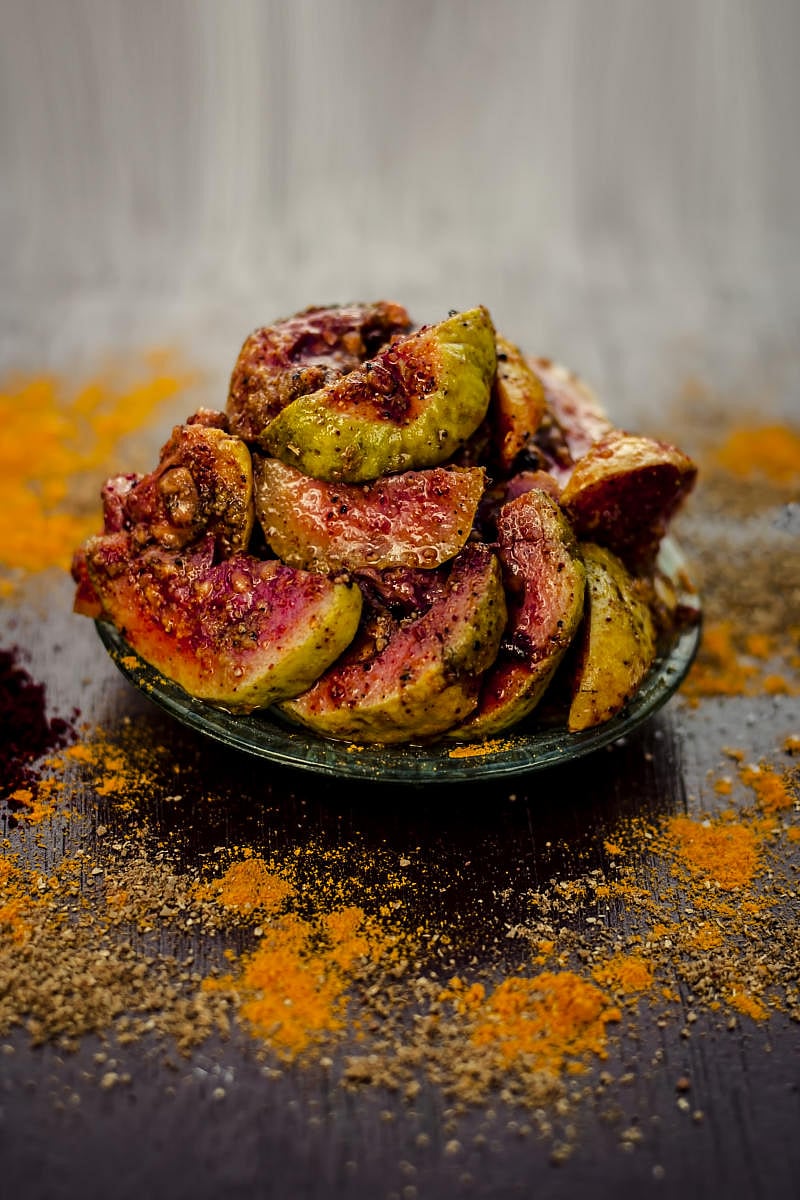

What comes to your mind when you think of pickles? Aam, nimbu and amla dunked in a concoction of spices and oil, stored away in ceramic jars. While that’s right, do you know you can pickle watermelons and avocados too? As you are cooped up in the home again, probably looking to restart your kitchen experiments, let us lead you into the world of fruit pickling.
Strange as it may sound but apples, plums, pears, peaches, grapes, cherries, strawberries, watermelon, and figs are commonly pickled around India. Apricots, olives, cantaloupe and passion fruit occasionally so. Blackberries, barberries and currants in fewer regions. A retired lawyer from Chennai and known as the Pickle queen of India, Usha R Prabakaran, whose book Usha’s Pickle Digest consists of 1,000 recipes, adds, “The idea of a pickled cherry might seem bizarre but once you’ve tasted these sweet-tart little beauties, trust me, you’ll be reaching for the jar again and again. A heady dose of vanilla and a hint of tarragon (herb) bolsters the cherry’s fruity flavour while a cider vinegar brine keeps things interesting.”
Usha explains why fruit pickling is a delicious idea: “Pickling brings out the natural sweetness of fruits and brine adds a zippy kick. Plus, pickled fruits are a great way to feast on summer’s bounty year-round. And the versatility! Nibble them with cheese, toss them with spaghetti, plop into a cocktail, serve alongside roasted meats or mix into salads.” Or go desi with rice and parathas.
You can make it in as many ways as you can eat it. Ferment it or preserve in salt and sugar or immerse in vinegar or saltwater brine and add aromatics of your choice. “The quick-pickling method involves boiling a mixture of vinegar, salt, spices, and sometimes sugar, which is then poured over the produce you’ve packed into clean, sealable glass jars,” Usha says, warning that these quickles, yes, she calls them that, must be stored in the refrigerator and consumed within two weeks or they will spoil.
Communications consultant Reena Pillai from Bengaluru loves how quickly these relishes can be made. A year ago or so, she cut the green guavas idling in her fridge into small cubes, cooked them in oil, added masala and tadka and there it was, her guava pickle. “Surprisingly, it tasted good with puris,” she recalls.
Likewise, in a bid to save love apples (or java apples) from going to waste, her mother started pickling them two years ago. Between frying the cut pieces in freshly ground spices, boiling in salt water and tempering the batch, it was ready in hours. Reena likes to have it with her rice and tomato saaru (rasam).
Zero-waste practitioners are indeed taking the cause of fruit pickling forward. Hear it from Samta Narvekar, a Mumbaikar living in the US: “We received a lot of green apples one Thanksgiving. My family finds them too tarty to eat while I did not want to throw them. That’s when the green apple chunda was born.” A take on Gujarati Aam Ka Chunda (sweet mango pickle), it paired well with khichdi and paratha.
Hailing from the Konkani community, Vidya Shenoy was familiar with pickles made from hog plum, tree sorrel and raw jackfruit. But never had she heard of a nendra banana pickle till she spotted it online a few months ago. The next thing we know, the former dietician living in Ernakulam pickled it in minutes. “These are instant pickles, not preservative pickles, so they don’t survive long. They must be kept in the fridge and consumed within 10 days,” Vidya cautions. That’s true, their shelf life depends on the preservatives used.
Then there are new-age picklers like Honey Islam from Bengaluru. She uses kombucha, a fermented tea drink, as a souring agent in place of vinegar. “Strawberry-habanero chilli pickle is my current favourite. I use it in salad dressing, in toasties too,” glees the kombucha entrepreneur.
“Pickling is an awesome way to add a punch of flavourful acidity to in-season fruits and vegetables,” Usha sums up. Not to forget, these sweet-sour yummies can save a bland meal any day.
Sour Chambakka (java apple) pickle
Ingredients
500g half-ripe chambakka, keep whole, wash, wipe, remove stalks
30g chilli powder
5g mustard seeds, 1g fenugreek seeds, 5g asafoetida roasted in oil & powdered
10g grated jaggery
10g mustard seeds
150ml vinegar
100g salt
200ml oil
Method
Marinate the chambakka in salt for two days. Toss daily.
Add spice powders, vinegar and jaggery to it. Mix well.
Temper with mustard and stir thoroughly.
The pickle is ready to use after a day and lasts for six months.
(Recipe by Usha R Prabakaran)